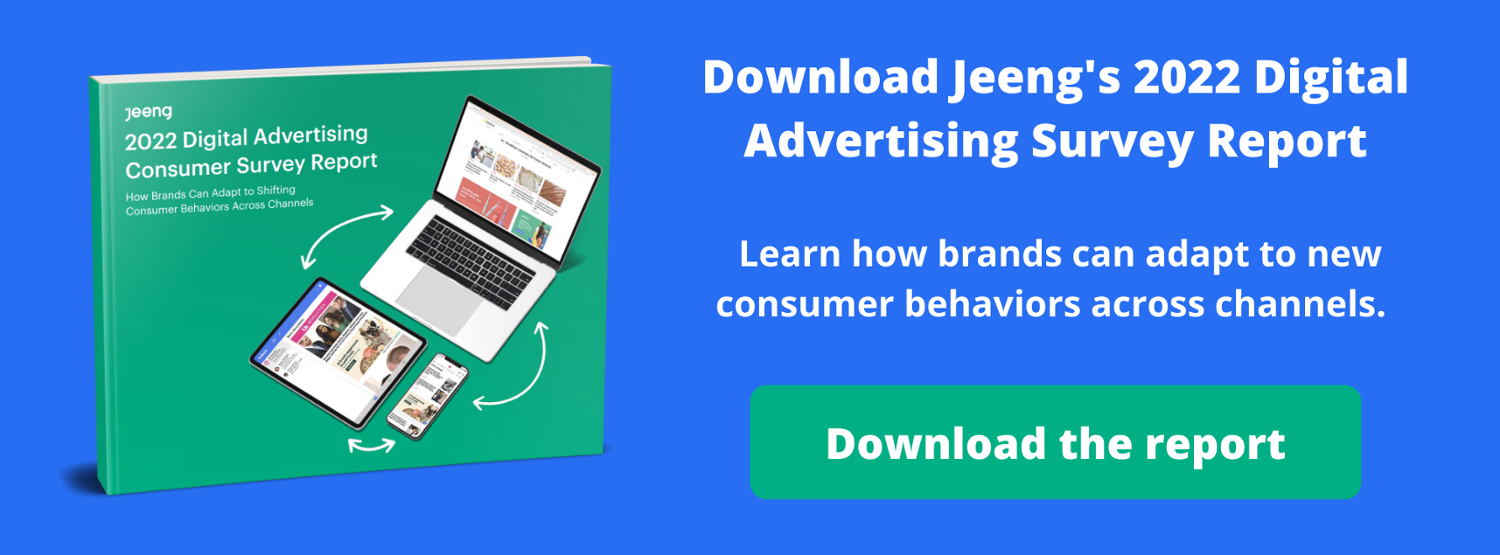Customer experiences can make or break audience relationships — especially over email.
According to Zendesk, 61% of customers would switch to a competitor after just one bad experience — a 22% increase from last year. Meanwhile 76% of customers are gone for good after two bad experiences.
As email continues to grow into one of the most engaging and trustworthy channels on the web, brands will need to deliver high-value, personalized customer experiences if they want to stand out. Just last year, email consumption nearly doubled amongst U.S. audiences, and 3 out of 4 people now check email several times a day. That means competition is tighter than ever.
Download Jeeng’s 2022 Digital Advertising Consumer Survey Report for more audience insights.
So, how can advertisers stand out from the crowd and keep readers coming back for more? With the power of customer experience (CX) email marketing.
What is CX marketing?
CX marketing is the process of delivering content and campaigns across touchpoints to build audience relationships, improve customer perception, and increase retention. Simply put, it’s about creating outstanding experiences that keep customers happy and loyal.
When it comes to email, CX marketing can look like personalized newsletters delivered to specific audience segments, email ads targeted to certain demographics, or real-time alerts triggered by specific actions, like abandoned shopping carts.
That’s easier said than done, of course. The problem is that many advertisers are still struggling to effectively execute CX marketing. According to Adweek and Accenture reported, 80% of brands think they deliver superior customer experiences but merely 8% of customers agree.
Why is CX email marketing important?
One good email might drive a few leads or sales. A good CX email marketing strategy, on the other hand, has the power to nurture audience relationships for long-term growth and profitability. CX is especially important on a direct-to-consumer channel like email, where advertisers have an opportunity to reach readers right in their inbox — alongside messages from friends, family, and coworkers.
As Jeeng CEO Jeff Kupietzy said in a new Digiday study on email marketing personalization: “People are recognizing that [email personalization] is no longer a nice-to-have, it’s a must-have. Email is the only place that publishers can control the relationship with their end user. So if they don’t have an aggressive program, they’re missing out on the best way to actually build and understand their own audience.”
What are the 3 great CX email marketing best practices?
We’re in a new era of email marketing, and that means there are new benchmarks for what qualifies as a superior customer experience. So “Hey {FirstName}” won’t cut it anymore. Brands need to think beyond surface-level customizations and start building data-driven, comprehensive experiences that truly put the customer first.
Specifically, here are the three customer experience principles and examples that every email advertiser should follow:
1. Provide helpful information for each reader
Great CX marketing is helpful and informative, anticipating audience questions before they arise. Send an email to new trial members, for instance, about how they can make the most of their free membership. Point customers to local shops in their community. Or help readers prepare for an upcoming holiday with relevant products and educational content.
Just look at the grocery delivery service, Shipt. The brand sends emails to help subscribers access same-day delivery from neighborhood stores. The emails even include a “Choose your store” call-to-action (CTA) button above the fold:
2. Create personalized experiences for deeper engagement
Personalize the email experience for your customers so they feel heard and understood. As our recent study found, nearly 60% of U.S. consumers would subscribe to emails with personalized content. And almost 70% say they would click on an email newsletter ad if it’s interesting or relevant to them.
Online rental marketplace Vrbo, for example, sent this email with the subject line, “Vacation inspiration based on your last trip.” It includes embedded recommendations for new travel destinations and an “Explore” CTA button, inviting readers to visit the website for more options and information.
3. Deliver value to your subscribers
Advertisers can earn email addresses — which are valuable pieces of first-party data — by promising to deliver value to their subscribers. And they can build great email marketing experiences by making good on that promise.
A tech brand, for instance, might offer exclusive product demos. An athleisure retailer might send out weekly workout tips. Or a beauty brand might launch new lines early for email subscribers and members. Each of these email campaigns provides something of value to the customer.
Just look at this customer experience marketing example from Peloton. The fitness brand promoted its Strength roll call program directly to Guide members, offering up the opportunity to unlock exclusive features for better workouts:
Ready to build your own next-level customer experiences with email marketing? Contact Jeeng to get started.


